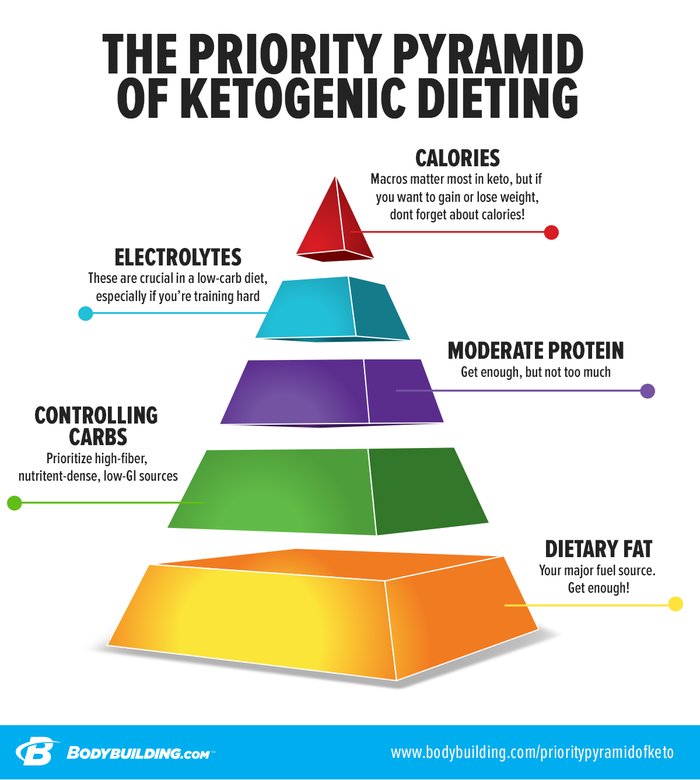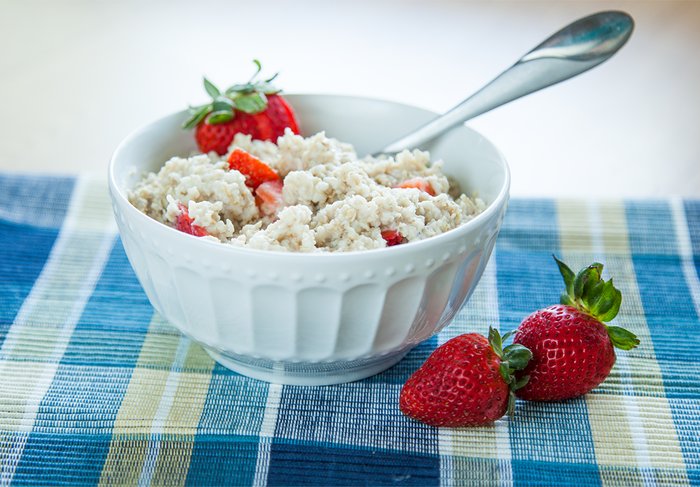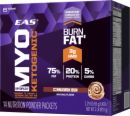When you first begin researching a ketogenic diet, it can take time to wrap your head around the idea of "eat fat to burn fat." But fear not; there's real science to back it up, along with an ever-growing number of enthusiastic personal stories. Following a high-fat or "ketogenic" diet can help you lose fat and improve your cholesterol levels, which can reduce your risk for heart disease.[1,2] Keto adherents also speak glowingly of how they feel and perform.
But there's more to this revolutionary approach that just eating lots of bacon! To get the benefits of a ketogenic or "keto" diet, you need to have your priorities right. From most important to least, here's how your ketogenic food pyramid should look.

Priority 1. Eat Enough Fat
Ketogenic diets work by forcing your body to change its primary fuel source from glucose (carbohydrates) to ketone bodies (fat). That's asking a lot of bodies mostly used to that quick carb energy. The secret to success is ramping up the fats as you lower the carbs.
Put another way, many people will tell you that keto is a "low-carb diet." However, that's only half the story. Fat is the biggest layer of the pyramid, because keto is a high-fat diet first and foremost, and in order to make room for all that crucial fat, it is also low-carb out of necessity.
So how does this shake out in macros? According to most versions of the keto diet, around 75 percent of your daily calories should come from fat. That's quite a difference from the 20-30 percent most of us are getting. Are you accustomed a 40/40/20 split of carbs, protein, and fats? Get ready for 5/20/75.

Yes, it's a radical change. That's one reason why it's important to track your macros to the gram in the early going, as outlined in Parker Hyde's comprehensive "Ketogenic Diet: Your Complete Meal Plan and Supplement Guide."
What this means is that if you're on a 2,000-calorie-a-day ketogenic diet, you'll need to get 1,500 of those calories from fats, which works out to 166 grams of fat per day (a gram of fat contains 9 calories). At first, it may be hard simply to find enough fat to consume over the course of the day. But doing that should be your highest priority.
If you don't eat enough fat every day, you'll pretty much be following a low-carbohydrate, low-fat diet, which will deprive your body of both fuel sources. You won't feel good, and you won't get the benefits of this approach. So eat your fats!
2. Be Conscious of Carbs
Yes, keto is a high-fat dietary approach, but when people say it's a low-carb diet, they're definitely not kidding around. On this diet, you'll be getting 5 percent of your total calories from carbs—or about 25 to 50 grams. That is not a lot of carbs, and as EAS Myoplex athlete Jason Wittrock points out in his video "The 5 Biggest Keto Mistakes," there are plenty of "hidden" carbs in foods you might not expect.
You can stretch this number by counting "net" carbs, which you get by subtracting total grams of dietary fiber from total carbs. This allows you to eat vegetables like dark leafy greens, which are still essential on this diet. For example, a medium avocado contains 12 grams of carbohydrates, but 10 of them are grams of fiber, so you can eat an entire avocado and count it as just 2 grams.

On the other hand, if you start the day with a half cup of oats, you've just swallowed 22 of your 25 or so daily grams of carbs. It's going to be a long day.
3. Don't Go Overboard on Protein
Your body has several survival mechanisms it can unleash when it feels threatened. And make no mistake, getting your body to change from glucose to fat for energy feels like a major threat in the short term. If it can, your body will compensate for the lack of glucose by making it out of protein.
This is why your ketogenic diet should get no more than around 20 percent of calories from protein, or about 100 grams a day. Eat any more protein than that, and your body could start converting it to glucose, which will kick you of ketosis. Plus, you'll feel tired and crappy. Some people find they are able to reintroduce protein over time, but in the early weeks or keto "induction" phase, it's best to stay on the safe side.
If you're concerned that your low protein input will cause you to lose muscle mass, just know that ketone bodies, which your body produces more of during ketosis, act like protein to protect your muscles. But you'll only get to that ketosis phase if the first two layers of the pyramid are on point!

4. Mind Your Electrolytes
The transition to a ketogenic diet can be grueling, to say the least. It can take your body 4-6 weeks or more to make the switch from glucose to ketone bodies. But it's those first few days, when you may feel fatigue, headaches, and an inability to concentrate, that cause most people to stop the diet.
One way to get through the transition is to make sure you're taking in enough electrolytes. The three major electrolytes—sodium, potassium, and magnesium—can drop in a hurry when you remove all those starchy carbohydrates from your diet. This matters! In fact, in Bodybuilding.com's "Ask the Expert Panel" on the ketogenic diet, Wittrock and Steve Hertzler, PhD, point to a lack of electrolytes as one of the biggest reasons that people feel awful in those early days and jump ship.

Avocados, dark leafy greens, and nuts provide quite a bit of those major electrolytes. But if you're feeling those early side effects from the diet, try salting your foods regularly or drinking cups of hot water with bouillon cubes.
"Chicken broth is absolutely critical on this diet as a way to ensure you are getting enough sodium," Wittrock says. "Any time a client calls me and feels bad, I immediately tell them to drink a cup of chicken broth, and their symptoms usually go away."
Here's what not to do: Get your electrolytes from mainstream sports drinks, which typically contain a lot of carbs.
5. Count Your Calories
Yes, calories still matter! But on the ketogenic diet, they usually aren't as big a concern as macros.
The good news about a ketogenic diet is that you're moving from a carb-heavy diet, where each gram gives you only 4 calories of energy, to a fat-heavy diet, where each gram provides 9 calories—more than twice as much energy per gram.
But, sadly, calories are still calories, and if you get too many of them from fats, you're still going to gain weight—even if you've cut your carbs almost to zero. If you're "going keto" to lose weight, you still need to measure and track those dang calories if you want to reach your goal.
So why is this all the way at the top of the pyramid? Because as many ketogenic dieters will tell you, it's pretty hard to get enough calories to get into a pronounced surplus on this approach. Possible? Of course. But all that fat is so filling that it's unlikely you'll be able to pull it off.
Want the one-paragraph version? Keep calories somewhere on your radar, but focus squarely on fat. Know your carbs, and don't blow your carbs. A little protein goes a long way. Electrolytes rule. Build your pyramid the right way, and it'll stand the test of time!
References
- Westman, E. C., Yancy, W. S., Mavropoulos, J. C., Marquart, M., & McDuffie, J. R. (2008). The effect of a low-carbohydrate, ketogenic diet versus a low-glycemic index diet on glycemic control in type 2 diabetes mellitus. Nutrition & Metabolism, 5(1), 1.
- Yancy, W. S., Olsen, M. K., Guyton, J. R., Bakst, R. P., & Westman, E. C. (2004). A low-carbohydrate, ketogenic diet versus a low-fat diet to treat obesity and hyperlipidemia: a randomized, controlled trial. Annals of Internal Medicine, 140(10), 769-777.


